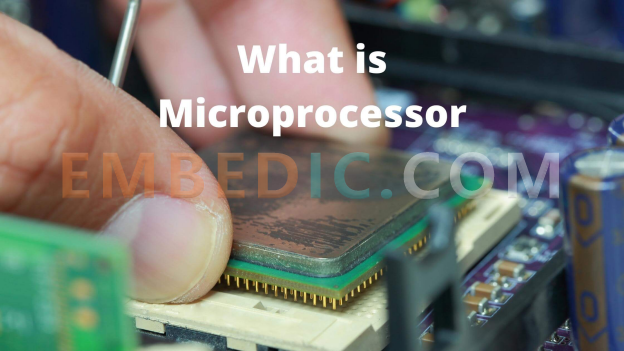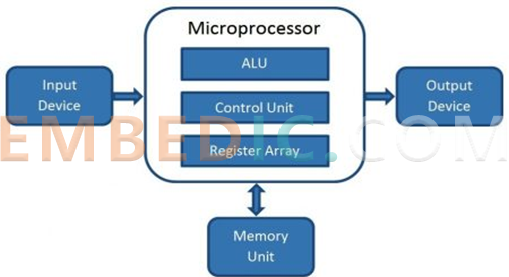Microprocessors are the heart of modern computing devices, serving as the central processing unit (CPU) that executes instructions and performs calculations. These powerful integrated circuits have revolutionized the world of electronics, enabling the development of computers, smartphones, embedded systems, and various other devices.

Over the years, several types of microprocessors have been developed, each offering unique features and capabilities to cater to different applications and industries. In this article, we will explore the different types of microprocessors, from general-purpose processors to specialized processors designed for specific tasks. Whether you are an electronics enthusiast, a student, or a professional in the field of computing, understanding the various types of microprocessors will provide valuable insights into the diverse landscape of CPU technology.
A microprocessor is a small, integrated electronic device that functions as the central processing unit (CPU) of a computer or any digital device. It is a semiconductor chip that contains millions or even billions of transistors, allowing it to process and execute instructions from computer programs.
The primary purpose of a microprocessor is to perform arithmetic, logical, control, and input/output operations based on the instructions stored in its memory. These instructions are represented in binary code, which the microprocessor interprets and executes to carry out tasks.
The internal structure of a microprocessor can be quite complex as it consists of various components and functional units responsible for executing different calculations and control tasks.

Control Unit: The control unit is responsible for fetching instructions from memory, decoding them, and executing the instructions in the correct sequence. It controls the operations of other functional units.
Arithmetic Logic Unit (ALU): The ALU performs arithmetic and logic operations, such as addition, subtraction, logical AND, logical OR, etc. It serves as the computational core of the processor.
Registers: Registers are high-speed storage units located within the CPU, used for temporarily holding instructions, data, and intermediate results. Registers facilitate fast access to data, which speeds up data processing.
Clock: The clock generates regular timing pulses that synchronize the operations of different components within the processor, ensuring instructions are executed in the proper sequence.
Bus: Buses are data transmission channels that connect various components inside the CPU. They include data buses, address buses, and control buses, which facilitate the transfer of instructions and data within the CPU.
Cache: Cache is a high-speed memory located inside the CPU, used for temporarily storing data fetched from the main memory. It enables faster access to frequently used data, thereby enhancing performance.
Instruction Decoder: The instruction decoder interprets the fetched instructions from memory and translates them into executable operations.
Pipeline: The pipeline divides the instruction execution process into multiple stages, allowing simultaneous processing of multiple instructions. This improves efficiency and throughput.
Branch Predictor: The branch predictor attempts to predict the outcome of conditional branch instructions, aiding in the correct execution of subsequent instructions in the pipeline.
Multiplier and Divider: These specific functional units handle complex multiplication and division operations.
Floating-Point Unit (FPU): The FPU is a specialized unit for handling floating-point number calculations used in scientific, engineering, and graphics computations.
Here are some common types of microprocessors:

1) x86 Microprocessors
These are the most widely used microprocessors in personal computers and laptops. They are based on the x86 architecture and are manufactured by companies like Intel and AMD. Common examples include Intel Core series and AMD Ryzen series processors.
2)ARM Microprocessors
ARM (Advanced RISC Machines) processors are popular in mobile devices such as smartphones, tablets, and wearables. They are known for their energy efficiency and are designed for low-power consumption. Companies like Qualcomm, Apple, and Samsung use ARM-based processors in their mobile devices.
3)PowerPC Microprocessors
PowerPC processors were developed by IBM, Motorola, and Apple. Although they are less common in personal computers now, they were once used in Macintosh computers and some gaming consoles, like older versions of the Xbox and PlayStation.
4)MIPS Microprocessors
MIPS (Microprocessor without Interlocked Pipeline Stages) processors are used in various applications, including networking equipment, digital TVs, and some embedded systems.
5)SPARC Microprocessors
SPARC (Scalable Processor Architecture) processors are RISC-based microprocessors used in servers and workstations. They were originally developed by Sun Microsystems (now owned by Oracle).
6)Microcontrollers
Microcontrollers are a type of microprocessor designed to control embedded systems and perform specific tasks. They are commonly found in household appliances, automotive systems, industrial machinery, and various consumer electronics.
7)System-on-a-Chip (SoC)
SoCs integrate multiple components, including microprocessors, into a single chip. They are prevalent in mobile devices and other compact electronic devices where space and power efficiency are crucial.
8)Digital Signal Processors (DSP)
DSPs are specialized microprocessors optimized for processing and manipulating digital signals, commonly used in audio, video, and communication applications.
9)Graphics Processing Units (GPUs)
While primarily designed for rendering graphics in computers and gaming consoles, modern GPUs have evolved to handle parallel processing tasks beyond graphics, such as artificial intelligence and machine learning computations.
|
Type |
Characteristics |
Representative Chips |
Manufacturers |
|
General-Purpose High-Performance Microprocessor (x86) |
Used in personal computers and laptops, high performance and feature-rich |
Intel Core i9 / AMD Ryzen 9 |
Intel / AMD |
|
Embedded Microprocessor (ARM) |
Power-efficient, widely used in mobile devices and IoT applications |
Qualcomm Snapdragon / Apple A14 Bionic |
Qualcomm / Apple |
|
Digital Signal Processor (DSP) |
Specialized for processing digital signals, used in audio and video applications |
Texas Instruments TMS320C6713 |
Texas Instruments |
|
Microcontroller |
Used in embedded systems, small and power-efficient |
Atmel ATmega328P / Microchip PIC18F4550 |
Microchip Technology |
|
PowerPC |
Used in servers, networking equipment, and gaming consoles |
IBM POWER9 / Nintendo GameCube Gekko |
IBM / Nintendo |
|
MIPS |
Widely used in networking equipment and digital TVs |
MIPS R3000 / MIPS32 M4K |
MIPS Technologies |
|
SPARC |
Used in servers and workstations |
Oracle SPARC T7 / Fujitsu SPARC64 XIfx |
Oracle / Fujitsu |
|
System-on-a-Chip (SoC) |
Integrates multiple components, used in smartphones and IoT |
Apple A14 Bionic / Qualcomm Snapdragon |
Apple / Qualcomm |
|
Graphics Processing Unit (GPU) |
Designed for graphics rendering and parallel processing |
NVIDIA GeForce RTX 3080 / AMD Radeon RX 6800 |
NVIDIA / AMD |
In conclusion, the world of microprocessors is vast and diverse, offering a wide array of options to cater to various computing needs. From general-purpose processors suitable for everyday computing tasks to specialized processors designed for specific applications like graphics rendering, artificial intelligence, or real-time control, the types of microprocessors continue to evolve and shape the technological landscape.
When selecting a microprocessor for a specific project or application, consider factors such as performance requirements, power consumption, instruction set architecture, and compatibility with other components. Stay updated with the latest advancements in microprocessor technology, explore datasheets and technical documentation, and make informed choices when incorporating microprocessors into your projects. Embrace the power and versatility of microprocessors, and unlock new possibilities in computing, communication, and digital innovation.
Manufacturer: STMicroelectronics
IC MCU 8BIT 32KB FLASH 32LQFP
Product Categories: 8bit MCU
Lifecycle:
RoHS:
Manufacturer: Texas Instruments
IC DGTL MEDIA PROCESSR 1031FCBGA
Product Categories: DSP
Lifecycle:
RoHS:
Manufacturer: Microchip
IC MCU 8BIT 14KB FLASH 28SDIP
Product Categories: 8bit MCU
Lifecycle:
RoHS:
Manufacturer: Texas Instruments
IC DSP FIX/FLOAT POINT 841FCBGA
Product Categories: DSP
Lifecycle:
RoHS:
Looking forward to your comment
Comment